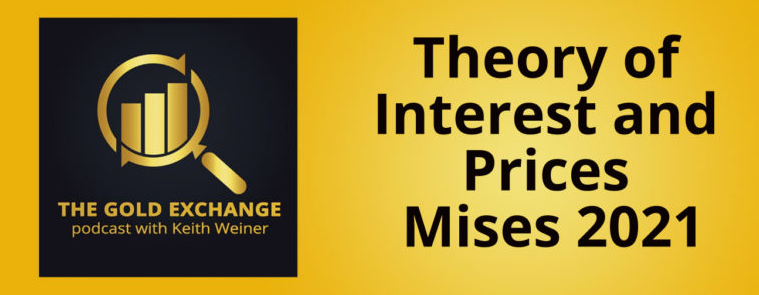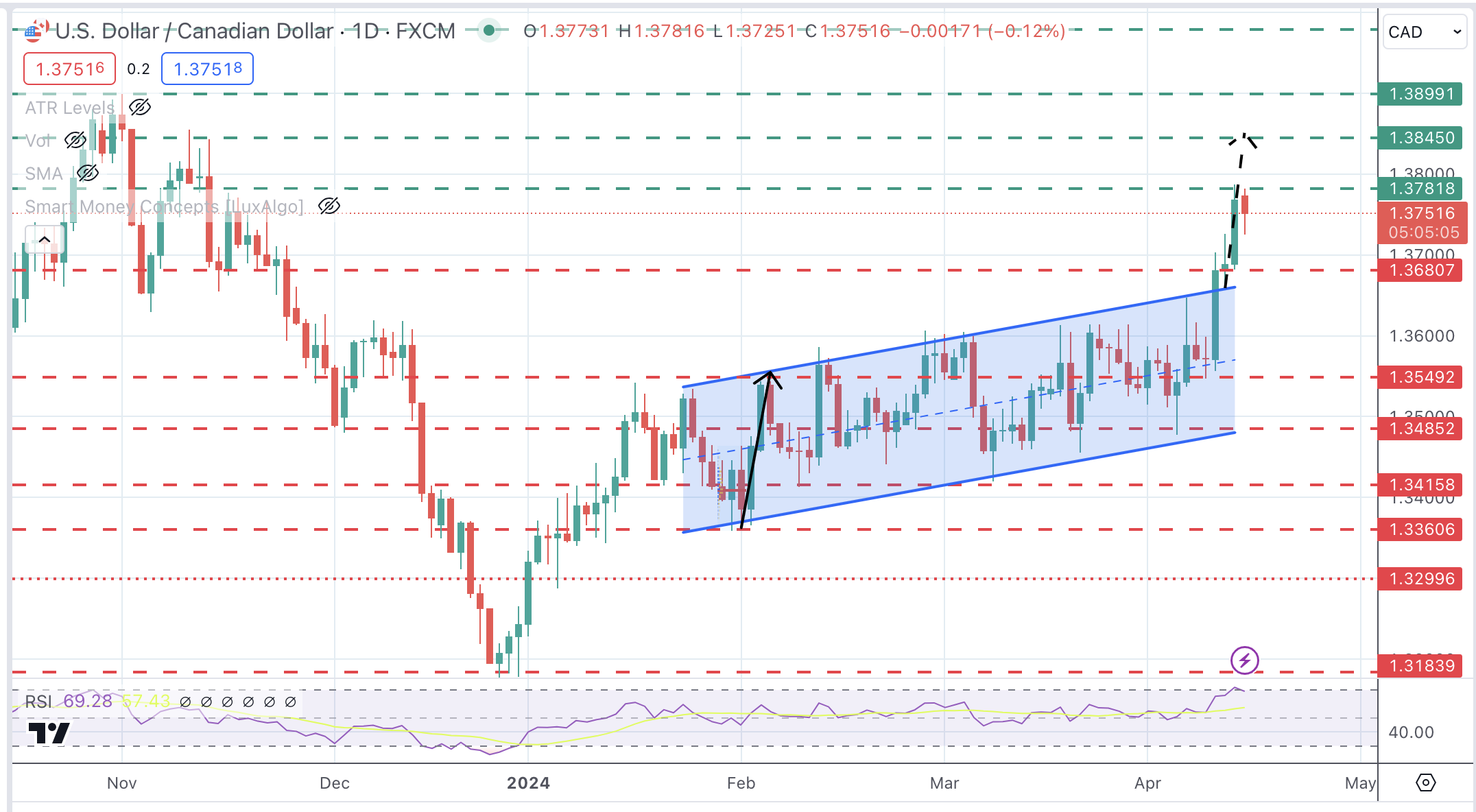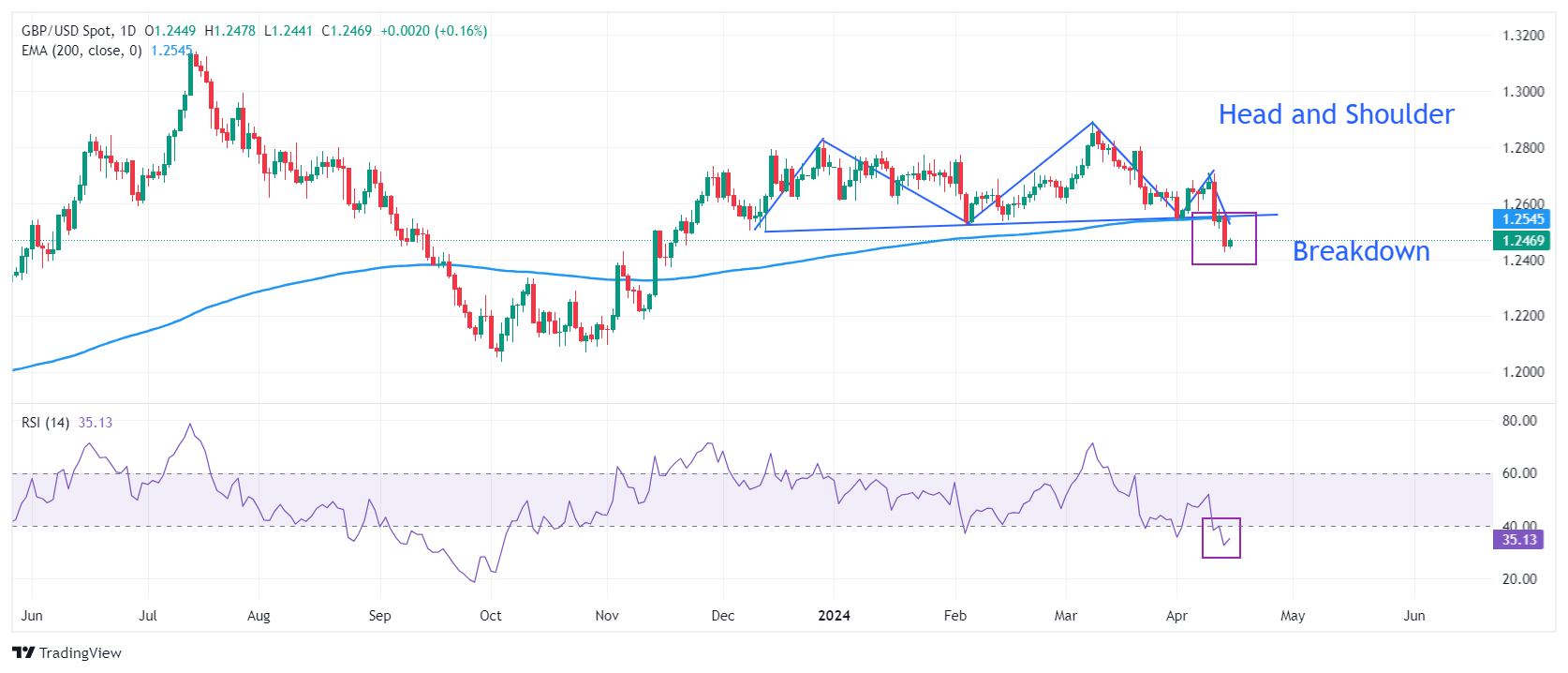Keith presented his Theory of Interest and Prices at the Mises’ Austrian Economics Research Conference earlier this year. Described as one of the most interesting talks of the entire event, this episode includes his fifteen-minute presentation as well as some follow-up thoughts by Keith himself at the end. In this episode, he covers:
-
- Was Milton Friedman right about inflation?
- The dynamics of the central banks pushing interest below time preference, and above the marginal productivity of the entrepreneur.
- What does the collapse of the Tacoma Narrows Bridge and Jimi Hendrix’s guitar playing have to do with interest rates, monetary dynamics, and the Federal Reserve?
- Plus: Keith’s summary thoughts at the end – the critical differences between positive and negative feedback loops
Additional Resources
Episode Transcript
John: Hello again and welcome to the Gold Exchange podcast. A few weeks ago, Keith was invited to present his Theory of Interest and Prices at the annual Mises conference held in Auburn, Alabama. This presentation is based on a seven-part article which Keith wrote many years ago after completing his Ph.D. at the new Austrian School of Economics. We’ll of course link to that in the show notes. I’ll wet your whistle a bit by reading the first few lines of that paper, “Under gold in a free market, the theory of the formation of the rate of interest is straightforward. The rate varies in the narrow range between the floor at marginal time preference and the ceiling at marginal productivity.” Keith defines these terms in the presentation.
“There is no positive feedback loop that causes it to skyrocket, as it did up until 1981, and subsequently to spiral back into the black hole of zero, as it is doing now. It is stable. In an irredeemable paper currency, it is much more complicated.”
Lucky for us, Keith specializes in uncomplicating the complicated. I hope you enjoy this presentation. Please listen through to the end to hear a few summary thoughts from Keith.
Keith: Everybody, I assume, is familiar with the Milton Friedman quote where he says “Inflation is everywhere, and always a monetary phenomenon.” Now, the problem with this…first of all, it’s not true. The problem with this is that it causes a fundamental confusion because there are different sources that can drive up prices. So I’ve coined a term that I think is apt for something that I want to set aside – as a non-monetary force – which I call useless ingredients. So that is every time a regulator, every time a taxinator, puts something, forces a producer…whether it’s a producer of services such as a hotel, that suddenly they have to have all of these hand sanitizer stations all over the place and free masks all over the place…who knows what they have to do in the bathrooms of each room…drive up the cost.
But they drive up the cost in a way that the consumer does not appreciate, does not want to pay for, and very often doesn’t even know that they’ve done it. Or the taxinators say, well, let’s add a 25 cent per gallon tax on gasoline. And for two or three months after California did that – some time last year, or the year before – everybody knows, oh, it’s the new tax. After that, they forget that and they say, “Look, the price of gas is up, it’s inflation.”
Now, in a certain sense, you could say, fine, inflation means rising prices and so, OK, whatever. That’s the definition. And let’s just go with what is in common use out there. But it fundamentally causes this confusion between the non-monetary stuff, which is relentless. Every day, in every industry, every business is being hit with more and more and more of this stuff, the compliance stuff, every restaurant having to go through, validating the supply chain and every decision, you know, ingredients list and calorie counts and all these things. It’s relentless.
But the causes and effects of this are fundamentally different from monetary forces that push prices either up or down. And yes, I did say down. So, ladies and gentlemen, I’m Keith Weiner. I founded a company called Monetary Metals. I’m very interested in the interest rate because we pay interest on gold and we’re trying to bring back the gold standard by paying interest on gold. So it’s kind of a unique concept.
And so I’m very interested in interest rates for this because it’s interest rates ultimately that are the monetary force. Forget all this tax and regulatory stuff. I think that’s pretty well understood.
The difference between these two…both can force the price up of consumer goods. But on the non-monetary side, you have a very simple thing. They come to a restaurant and say from now on, you have to put in an Americans with Disabilities Act bathroom. So that takes your restaurant from 15 tables to 12 tables. You’ve just lost 20 percent of your revenue. And therefore, the prices have to go up or maybe you go out of business and there are fewer restaurants and therefore less supply, prices have to go up to compensate for that.
That’s a one-time thing. It’s a step function up in price…until the next thing. But there’s no dynamic, that’s not a moving system. In the monetary side, it’s a dynamic when the….so the question that I think should be asked here is what happens when the central bank pushes interest rates below time preference? Or to use the term from Mises that President Herbener was talking about yesterday morning, originary interest. So there’s some idea that people have, of what interest rate they demand.
And the central bank comes along and says, well, we’re going to buy up enough bonds…everybody understands the bond price and the interest rate are a simple seesaw? That every tick up in the bond price, is a tick down in interest rate?…so the central bank comes along and buys up bonds, pushing up the bond price and now the interest rate is pushed below time preference. This is just like any other central planning activity, with some differences, but a central planning activity decides “We’re going to set the price not based on the market, not based on any preferences of any individual economic actor. We’re going to now set it based on edict.”
The interest rate is by far the most important price in the economy because all other prices depend on it. The price of assets is inverse to interest rates. So houses, real estate, stocks, gold, a lot of these things, gold’s a little bit different, but the price of assets is rising as the interest rate is falling. And consumer prices is a whole different thing. So that’s the thrust of my talk, is to look at the monetary effect on consumer prices
So they push the interest rate down below time preference, and they set in motion a dynamic characterized by resonance and positive feedback loops. So the best way to understand resonance…has everybody’s seen the video of the collapse of the Tacoma Narrows Bridge? It’s fascinating and it’s also amazing that it was actually captured on film. Somebody must have had an 8mm camera there at the right moment to actually watch the thing going down into the drink. It’s not like people had iPhones in those days.
And so what you have is, there’s a gorge with this river running through it and a bridge spanning over it. And there’s a gusting wind that comes down the gorge. Not a steady-state wind, but it’s gusting. And the gusts have a period or periodicity of the gusting. Turns out it matched the resonant frequency of the bridge structure. You cannot understand this as a problem of statics. The engineers who designed this bridge understood the load and the weight and the amount of steel that they had and everything else. That was fine.
In fact, when it fell, if I recall the video, there’s only one car on it and the guy who was in that car abandoned ship, and comes running down because he realizes the bridge is twisting. So with each gust of the wind down the gorge, the bridge -it’s a torsional, it’s a twisting wave. But because the periodicity of the gust matches the resonant frequency of the bridge, with each twist, it grows in amplitude. Eventually, the steel shears or tears or whatever happens, and the whole thing dumps into the drink.
And so there’s a dynamic system here involving resonance and positive feedback. So think about Jimi Hendrix. He’s playing the guitar, right. And then he holds the guitar up to…pretend this is my amplifier. Holds it up to the amplifier. Well, the string is vibrating, which sends an electric signal through the pickups, through the amplifier, which makes the speaker generate motion, which vibrates the air, which then since the strings are right there next to the speaker, is picked up into the string and it’s round and round and round.
And the squeal that’s generated gets louder and louder and louder until there’s a circuit in there that actually limits it. If it wasn’t limited, it would go to the point where the amplifier caught on fire. You don’t want that
So you have this ratcheting positive feedback effect. And so I can’t possibly try to address everything that’s in my paper, but I want to give sort of a taste of it and hopefully motivate everybody to want to actually read the paper.
So in a normal free market – and I say that with all the awareness that today that’s not what we have – there is time preference, and then interest should be above or at least not less than time preference. Because if it was less than time preference in a free market, i.e. gold standard, what do you do when your time preference is violated? Well, you pull your gold out of the bank.
That forces the bank to sell a bond in order to raise the cash to pay you. And the selling of the bond pushes the bond price down, which pushes the interest rate up so the saver has the ultimate brakes on the interest rate. It can’t go below this floor. Right?
And at the same time, the interest rate has a ceiling and that’s the marginal productivity of the entrepreneur, a.k.a. return on capital. You cannot borrow money at 10 percent to expand a business that gets an eight percent return on capital. It doesn’t work. If the interest rate ever got above that, not only wouldn’t you borrow any more, you might actually sell assets in order to pay down debt because you’ve got inverted.
So there’s two positive spreads, time preference, or originary interest, to interest rate and interest rate to marginal productivity.
So they come along and first thing they do is they say, let’s set up a central bank. In America that was established in 1913. In 1933, they disenfranchise the savers by making gold illegal, which means now you can’t withdraw your gold out of the bank anymore. You have a choice of either owning a bank deposit or effectively a Fed deposit in the form of paper cash.
No longer can you really opt-out. You’re stuck either way. And so they can set in motion this dynamic. And the dynamic really takes off after World War Two. We have this incredible skyrocketing of interest rates starting around 1947 and going through 1981. And during this time, what they did was they pushed the interest rate below. So what do people do? And at this point, you can’t own gold after 1933. That’s illegal. So consumers who are violated, individuals who were violated by this start to buy and hoard goods. Not raw commodities necessarily, but they start to hoard goods.
I’m just old enough to remember being a kid in the late 70s. And my parents, if they’d go to the supermarket, they’d buy 100 cans of tuna fish. Or they’d buy 50 boxes of Kleenex. Or they’d buy five big tubs of detergent. And so I call it people preferred a pantry balance, to a bank balance. Because everyone realized the prices were going up.
But now here’s the ratchet effect to this. It isn’t just consumers doing this. Businesses get in on the act. And businesses begin to buy not only the raw materials but to hoard the goods in between each step. If you have a 17 step production process as you go from raw materials through all these steps to finished goods, and in between each stage, you have a warehouse full of partially completed goods. This is so alien to anybody in the business world today. You talk about this, it’s like you’re talking about life on planet Mars.
But that’s how it was in those days. Because when you bought your raw materials, the longer the time that elapsed between the purchase of the raw materials and the sale of the finished goods, every price of every good was up every week. I recall that as a 12-year-old going to the grocery store with my parents. Every week, every price was up. Enough that I noticed it, and I was a kid and I wasn’t paying for any of it.
So the longer you can stretch out that process, the more money you can make. So businesses get into the act of borrowing to finance every increase that…it’s not just to finance a hoard of commodities. It’s a race condition between the production of this stuff and an ever-rising rate of purchasing of it in order, not to even consume it, but just build bigger and bigger buffers or hoards of the stuff.
And so you have this ratchet now of borrowing, which means selling more bonds. Which is pushing down the bond price and pushing up the interest rate in order to finance more hoarding of goods. But the production of goods doesn’t keep up. And that’s because the interest rate is rising. Every time somebody goes to do a business case: Should I borrow money to buy all the tools and equipment to build a factory to produce more of this? The interest rate is up. Your business case is spoiled. And in fact, actually, production is going down, because every time a factory gets to end-of-life and they say, “Well, now we’re going to borrow money…wait a minute, the interest rate is 16 percent. We don’t have a business case for that.”
And so it’s a gutting, it’s a hollowing out, of industry, especially capital intensive, productive industry. So that describes the 1960s and 1970s until the so-called Volcker Reagan miracle of 1981. It occurs virtually the moment Reagan gets into office. The interest rate finally hits that spike high. You get defaults. Banks are reluctant to lend. Interest rates spike.
Now what happens? Well, interest is pushed below time preference. But every time the interest rate is going up, so is time preference because the consumers aren’t stupid, they can see that prices are relentlessly rising. And so, yeah, OK, now they’re paying me six percent in the bank. I don’t care. Because I see inflation is that 10 or whatever. Well, eventually interest spikes up – was the Fed funds rate at 19 percent or something like that in 1981?
Eventually, it gets above time preference. Unfortunately, it also gets above marginal productivity. Now you see the exact opposite pattern, the liquidation of commodities. Lean and just-in-time begin to start to become trends in the United States, imported from Japan, where they had it much earlier because they were devastated in World War Two. And with interest below time preference, you have a ratcheting up. With interest above time preference, you have a ratcheting down. The liquidation of commodities, more and more commodities being squeezed out of every aspect of production.
A grocery store has, 25 percent, I think of its inventories on the shelves, 75 percent is on a truck that’s already on its way. There’s no inventory anymore, no warehouses for this stuff anymore. So you got interest above productivity and what does that mean? It means a marginal business has not got a business case to borrow, except with each downtick in the interest rate. If you didn’t want to borrow at eight percent and they lower the interest rate to six, now you’ve got a business case for borrowing.
So what happens if your hamburger place, and they lower the interest rate, essentially hitting your bid, and now you borrow and you build a new hamburger store? What happens? What does the law of supply and demand say happens to the price of hamburgers?
Hamburger supply, increased. Hamburger demand is probably pretty inelastic. So the price of hamburgers falls. And so what you see is soft, if not falling prices. They may not fall because of ever-increasing useless ingredients. But what you see is soft prices and in a lot of cases, actually falling, as each time the interest rate ticks down, you get the next wave of borrowing. But the borrowing is lethargic and only on a downtick on interest, increasing production.
And so you have essentially an over-capacity subsidized by the ever-falling interest rate. Anyway, this is very pathological. I could go on talking about this for hours and hours and hours, but in deference to the time…
John: All right, Keith, thank you and congratulations on this well-delivered presentation. I know you’ve received a lot of good feedback since. I’m sure it was a challenge to sum up what is a seven-part article in about 15 minutes. I just wanted to ask you if there was anything that you would like to add for our podcast listeners that you would have said if you had more time?
Keith: Yeah, that’s a good question. And the time slot was really a hard limit. And I think the thing that I want to say to summarize the whole thing is that in a free market, there are lots and lots of negative feedback loops. You know, if you were to go to the grocery store and they said, OK, we have sirloin steak at $199/pound, you wouldn’t buy it.
And the fact that, you and a lot of other people wouldn’t buy it, the fact that nobody’s buying it forces them to mark it down. And so the lack of buying is a signal…not just a signal, but actually a force. The store has no choice because if they don’t mark it down, then the meat spoils, and then they get zero. So they keep marking it down day by day until they find the consumer bid, essentially.
And that’s all through…every aspect of a free market is these negative feedback loops. The correction for high prices is high prices. The correction for low prices is low prices. But when the government interferes, you can talk about their interfering and the use of force, initiation of force, non-aggression principle and all that’s true. But from an economic perspective, what they’re doing is they’re blocking the transmission mechanism for some sort of negative feedback.
They want a price to be too high or too low. That’s the whole point. That’s not a bug, as we say in software development. It’s not a bug, it’s a feature. That is the intended effect, is to push something out of line, out of whack, out of balance, to make a price wrong and wrongful because of either their political aims – they want to buy votes – or because it’s just plain old, I guess you’d call it cleptocracy. They’re just looting the people by what they’re doing.
And so they selectively disable certain negative feedback loops. And then in the case of irredeemable currency, the whole point and the whole basis of my theory of interest and prices is that in lieu of the nice, elegant and relatively simple negative feedback loops, that in a gold standard and free market, the interest rate can’t go below a certain floor, otherwise the marginal saver pulls his gold coin out of the banking system.
It can’t go above a certain ceiling. Otherwise, the marginal entrepreneur stops borrowing and may even sell his capital stock. In irredeemable currency, instead of these nice, elegant, negative feedback loops, you have positive feedback. And a positive feedback loop is one in which the more out of whack it gets, the stronger the signal to keep moving farther out of whack. And so you get this runaway and thus my air guitar showing Jimi Hendrix holding the guitar up to the amplifier.
My analogy of the Tacoma Narrows Bridge is a positive feedback loop system. And so you had this endless rising, rising, rising, rising, rising rates and consumer prices from approximately 1947, right after the end of World War Two until 1981. Thirty-four years of it running away, shooting the moon. And then finally you get a spike high in 1981 almost a moment after Reagan takes office.
And then so far we’ve had – and it continues – forty years of falling trend. And these long positive feedback loop just-run-away-in-one-direction trends are just enormously destructive. And if there’s one thing that I would leave listeners with is that they be careful advocating for the government to monkey with something, because you may replace…a negative feedback loop is corrective feedback, a positive feedback loop tends to encourage things that are out of balance to go further out of balance.
And there are few things in nature that work that way. Thermonuclear…when you have enough fissionable mass, that’s a positive feedback loop. Most things in nature are negative feedback loops and negative feedback loops should be thought of as something that’s stable. And positive feedback loops should be thought of, something that runs away and ends in a catastrophic failure.
John: Great summary thoughts, Keith. That’s all the time we have for today. Thank you for joining us on The Gold Exchange.
Full story here Are you the author? Previous post See more for Next postTags: Featured,newsletter,The Gold Exchange Podcast






















